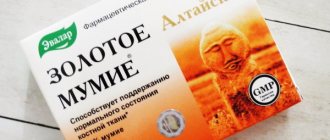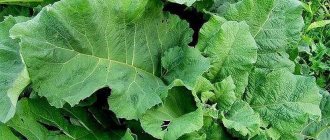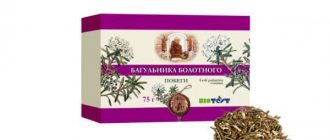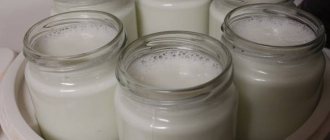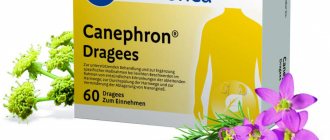Photo: UGC There are plants that have been successfully used in traditional medicine for thousands of years. One of them is marsh calamus. The magical properties of this wonderful herb were described by Hippocrates. Today it is successfully used in Ayurvedic, Chinese, and European medicine. What makes the plant so useful and effective, and why should it be used with caution? I will talk about this in the article.
How to harvest calamus roots
After which they should be washed off the ground, all excess removed from the roots and cut into pieces of 20-30 cm.
The roots are first air-dried, then the roots are dried in a well-ventilated area.
When artificially drying, the temperature should not exceed 25-30 degrees; if this rule is neglected, the roots will become unusable, because at elevated temperatures the essential oil evaporates .
Medicinal properties
- improved digestion
- stimulates appetite
Good to know…
Calamus has been known as a spicy plant since the times of the ancient Jews and Persians, and ancient Greek and Roman doctors began to use it as a medicine. In particular, Hippocrates left descriptions of medicines made from amyra root (calamus).
The ancient Greek physician Dioscorides recommended using this plant for diseases of the spleen, liver, respiratory tract, and also as a tonic and diuretic. The ancient Roman physician and scientist Pliny the Elder gives in his works descriptions of calamus and medicines made from it. Avicenna used calamus as a diuretic and as a cleanser for diseases of the stomach and liver.
Waterfowl love to hide in the thickets of calamus. Muskrats and muskrats actively use calamus rhizomes in their diet, and ducks readily eat the seeds (where they set and ripen).
Use in cooking
Dried calamus rhizomes are quite suitable for replacing spices such as bay leaf, nutmeg, ginger and cinnamon.
Many people use calamus in the preparation of fruit soups, sweet dishes and fruit salads, as a flavoring for confectionery and bread. The rhizomes are boiled in syrup and candied for confectionery. The essential oil and root are used to produce various drinks.
A tea is prepared from calamus, which effectively stimulates the appetite, fights heartburn and stimulates the normal activity of the gallbladder. It is added in small quantities when preparing various soups, sauces, broths, fried meat, cabbage and potatoes, and when canning fish.
In Poland, calamus leaves are often added to dough to give the bread a special flavor.
In Turkey, candied calamus rhizomes are a valuable delicacy.
Application in horticulture
A number of varieties have been bred for the decorative use of calamus in horticulture. Since the plant has an insecticidal effect, it is often planted in artificial reservoirs.
Other uses
- In China, every year on the fifth day of the fifth month, bunches of calamus leaves are laid out near beds, and pieces of rhizomes and branches are placed near windows and doors. According to the Chinese, this ritual wards off any evil that might enter the house.
- In some areas, the leaves of the plant are placed around the house for aromatization and to combat harmful insects.
- The essential oil of calamus rhizomes is actively used in perfumery (for flavoring toilet soaps, dental elixirs, powders, pastes and powders, creams and various lipsticks), in the production of alcoholic beverages (for the preparation of liqueurs, bitter vodkas, beer, fruit essences) and in fisheries. industry (to give fish a pleasant aroma and a slightly bitter taste), as well as in cooking and confectionery production.
- In the Caucasus, calamus rhizomes are used for tanning leather.
Medicinal properties of calamus
Calamus is a powerful nootropic herb that affects higher mental functions.
Nootropics stimulate mental activity, activate cognitive functions, improve memory and increase learning ability.
It has been known as a medicinal plant since ancient times, especially in China and India.
It is an important ingredient in most Ayurvedic medicines.
In the 16th century, German pharmacists sold several hundredweight of this root.
- Bitter essential oil and acorine increase appetite. It increases the secretion of gastric juice, improves digestion, and reduces stomach pain.
- Widely used in herbal medicine as an aromatic stimulant and mild tonic.
- Highly valued as a brain and nervous system rejuvenator and as a remedy for digestive disorders in Ayurveda.
- In small doses it reduces gastric acidity, while large doses increase gastric secretions, which is why it is recommended in the treatment of anorexia nervosa.
- Chewing the root relieves toothache.
- Activates the speech center of the brain. It is useful in treating speech disorders.
- Very effective for mental disorders.
- Used to treat schizophrenia, anxiety, depression and epilepsy. It also improves memory and learning processes.
- Used to treat throat conditions including sore throat, hoarseness, sore throat and related symptoms.
- It improves the pitch and quality of the voice.
- Used as an expectorant. Calamus liquefies phlegm and expels it from your body. Treats whooping cough, especially in children.
- Used in the treatment of various types of cancer such as lung cancer, breast cancer and liver cancer.
Used in the form of infusions, tinctures and powders.
- stomach diseases
- colitis
- hepatitis
- cholecystitis
- tonic for central nervous system depression
- kidney disease
- liver disease
- bladder diseases
- peptic ulcer of the stomach and duodenum
- bad breath
- inflammation of the mouth and gums
- inflammation of the larynx
- angina
- chronic tonsillitis
- stomatitis
- diarrhea
- rheumatism
- gout
- joint pain
- hypothyroidism
- arthritis
- swelling
- obesity
- asthma
- mouth ulcers
- syphilis
Digestive system
Calamus instantly relieves stomach problems. It cleanses the stomach and also relieves headaches caused by poor digestion. It relieves flatulence and colic, increases appetite. Used to treat anorexia, gastritis and stomach ulcers.
Anti-smoking
Chewing calamus root may cause you to dislike the taste of tobacco. Thus, those who are addicted to smoking can quit this habit by using this root. In addition, chewing or smoking tobacco often causes bad breath. Chewing the root can also help eliminate tobacco odor.
Oral diseases
Treats mouth ulcers and eliminates bad odor. Ayurveda uses the root as a pain reliever for toothache.
Treats insomnia
The aroma of calamus root is calming and can be used to treat insomnia. This calming effect can help relax your body and your mind.
Cough and fever
Along with a decoction of licorice root, it has a positive effect on cough, fever and colic in children. For a dry cough, chew calamus root for several minutes.
Skin diseases
Calamus root paste can be used externally for diseases such as eczema, ringworm and scabies. In the Siddha system it is used as a disinfectant for vaginal infections and foul-smelling discharges, mainly after childbirth.
Prevents infections
Calamus root is also capable of preventing infections, both internal and external. Due to its toxic substance, calamus root is used as a natural antibiotic.
For epilepsy
In the Siddha system, calamus is used with equal portions of asafoetida, haritaki, black salt, dry ginger, long pepper and black pepper to treat epilepsy and mental disorders.
Indications for use
What can remedies made from calamus root help to cure? The list of diseases is very wide:
- Joint diseases.
- Diseases of the gastrointestinal tract (stomach ulcer, cholecystitis, gastritis, diarrhea).
- Diseases of the upper respiratory tract (sore throat, pneumonia, laryngitis, bronchitis, pharyngitis).
- Circulatory system disorders (varicose veins, hypertension, thrombosis, thrombophlebitis).
- Skin diseases (pustules, ulcers, cracks, fungal skin diseases).
- Nervous system disorders (depression, neurosis, mental disorders).
- Diseases of the genitourinary system (menstrual irregularities, inflammatory processes, prostatitis, urolithiasis).
Folk remedies from calamus root
- The rhizome powder is drunk with warm milk for sore throat.
- Preparations made from the rhizome are used to stimulate the flow of urine, relieve constipation and cleanse the body of impurities.
- Stewed rhizome is given for fever, cough and poisoning.
- A mixture of rhizome powder with dried ginger powder and honey is taken for partial paralysis of the mouth, chin and cheeks.
- A mixture of rhizomes and cashew oil is used to relieve swollen joints and sore muscles.
- For this, rubbing is used.
- A mixture of rhizome powder and honey is taken as a cure for epilepsy and to treat loss of sanity.
To stimulate appetite and for gastrointestinal diseases
1 tsp crushed roots, pour 2 cups of boiling water, boil for 15 minutes. Drink ½ glass 3 times a day before meals.
For the treatment of jaundice
1 tsp crushed roots, pour 1 cup of boiling water, leave for 20 minutes. Strain. Drink ½ glass 4 times a day.
For inflammation of the mouth and gums
1 tsp Pour 1.5 cups of boiling water over the crushed roots and leave for 2 hours. Strain. Rinse your mouth with warm infusion.
For bad breath
1 tbsp. Pour 1 cup of boiling water over the crushed roots and leave for 30 minutes. Strain. Rinse your mouth.
For inflammation of the larynx, sore throat, chronic tonsillitis, stomatitis
1 tbsp. Add crushed roots to 1 glass of cold water and leave for 5 hours. After this, boil for 20 minutes. Strain. Rinse your mouth.
For gastritis with low acidity
1 tbsp. Pour 1 cup of boiling water over the crushed roots and leave for 20 minutes. Strain. Take ½ glass 4 times a day 30 minutes before meals.
For diarrhea
Take ½ calamus roots and ½ oak bark. 1 tbsp. collection, pour 1 cup of boiling water. Leave in a thermos overnight. Strain. Drink ¼ glass 3-4 times a day before meals.
For rheumatism, gout, joint pain, arthritis
Grind the roots into powder. The daily dose of powder is 5 g. Take before meals.
Take baths for joint pain
2 tbsp. pour 1 cup of boiling water over the roots. Boil for 20 minutes. Leave for 30 minutes. Strain. Take the bath at night for 10-12 days. Water temperature 35-36 degrees.
For cholecystitis
1 tsp. Pour 1 cup of boiling water over the crushed roots and leave for 20 minutes. Strain. Drink 1/2 glass 4 times a day.
For diseases of the bladder, kidneys and urinary tract
1 tsp. pour 1 cup of boiling water over the roots and leave for 20 minutes. Strain. Drink 1/2 glass 4 times a day 30 minutes before meals.
For heartburn
Grind the roots into powder. Take 3-4 times a day, on the tip of a knife. Course 2-3 weeks.
For scrofula, rickets
1 tbsp. l. roots, pour ½ cup boiling water. Leave for 2 hours. Strain. Take according to
1 tbsp. spoon, 3 times a day, 30 minutes before meals.
For diathesis
Take baths. Pour 300 g of rhizome into 3 liters of water. Boil over low heat for 20–30 minutes. Strain and pour into the bath.
For eczema, allergic skin rashes
Take baths. 2 tbsp. l. roots, pour 1 liter of boiling water, boil for 20 minutes, leave for 30 minutes. Strain. The course of treatment is 10–12 baths. Water temperature 35-36 degrees.
For various wounds
Grind the calamus roots into powder and sprinkle it on the wounds.
For irregular menstruation
1 tsp. pour 1 cup of boiling water over the roots and leave for 20 minutes. Strain. Drink ½ glass 4 times a day 30 minutes before meals.
For hair loss
1 tbsp. l. pour 1 cup of boiling water over the roots and leave for 30 minutes. Rub into hair roots.
For dandruff
2 tbsp. spoons of roots pour 1 liter of water, boil for 15 minutes. Strain. Make masks from the decoction: rub the decoction into the roots and leave for 20 minutes. There is no need to rinse the decoction from your hair.
For oily hair
2 tbsp. spoons of roots pour 1/2 liter of boiling water, boil for 2-3 minutes over low heat, cool, strain. Add a tablespoon of vinegar or the juice of 1 lemon, 40 ml of calendula alcohol tincture. Rub into hair roots.
For split ends of hair
2 tbsp. spoons of roots, 2 tbsp. burdock roots pour 1.5 liters of water, boil for 20 minutes. Leave for 6 hours. Rub the decoction into the scalp.
For the flu
Chew the roots.
Compote of calamus and apples
You can make compote from both fresh and dried apples. Fresh apples 300 g (if dry, take 3 times less), pour 1 liter of water and cook until tender. Then add 2 tbsp. dry roots of calamus, if the roots are fresh, you will need 1 cup. Boil. After this, leave for 5-10 minutes. The compote is ready, you can sweeten it if desired. Preferably with honey, when the compote has already cooled down and its temperature does not exceed 40-50 degrees.
To secrete gastric juice (achylia)
Calamus rhizomes 1 part, cinnamon bark 1 part, trifoliate leaf 1 part, orange peel 2 parts, centaury herb 2 parts, wormwood herb 2 parts. 1 tsp collection, pour 1 cup of boiling water. Cool. Strain. Drink 1/4 cup 4 times a day, before meals.
Contraindications
Knowing the numerous beneficial properties of the root, we must not forget about contraindications for use. First of all, individual intolerance and allergic reaction to substances contained in calamus. The list of contraindications is much smaller than the list of beneficial properties, but the most serious attention should be paid to it.
It is not recommended to use plant-based products:
- during pregnancy;
- those with high acidity of gastric juice;
- for bleeding of any etiology;
- people with low blood pressure;
- if a stomach ulcer has worsened;
- during attacks of epilepsy.
In any case, if there are contraindications, it is better not to self-medicate, but to consult a doctor before using a medicinal plant. It is necessary to prepare and take medicinal products from calamus in strict accordance with the dosage specified in the drug recipe, since an overdose can cause vomiting and even poisoning of the body.
Tonic tea
- Calamus roots (1 part)
- Veronica officinalis (2 parts)
- St. John's wort (14 parts)
- Lovage, root (4 parts)
- Wild strawberry, leaves (2 parts)
- Juniper, fruits (1 part)
- Ruta fragrant (4 parts)
- Yarrow (2 parts)
- Chicory root (2 parts)
- Rose hips, fruits (4 parts)
2 tbsp. collection, pour 0.5 liters of boiling water. Leave overnight. Take 3 times a day, 30 minutes before meals, in equal parts.
Calamus root in Ayurveda
Headache. Make a paste from the roots. Apply this to the sore area.
Rheumatoid arthritis. Apply the root paste to the affected areas.
Cholera. Grind the roots. Boil 1 teaspoon in 1 liter of water. Strain. Drink 4 times a day.
Cough. Roast calamus root and make powder out of it. Take a pinch of this powder and mix with honey. Take 2 times a day.
Stomach upset. Drink a decoction of the root 4 times a day.
Infection. Chew or lick a small piece of the root.
Skin ulcers and wounds. Grind the root into powder. Sprinkle them on the ulcer or wound.
Whooping cough. Take 1 tablespoon of calamus powder with honey 2 times a day.
Stomach problems. Chew small pieces of the root and swallow the saliva. For chronic diseases, the root can be chewed 3-4 times a day. Do not swallow the pulp.
Smoking. Chew the dried root.
Wounds, burns and ulcers. Place 1 tablespoon in ½ cup of boiling water and leave for 5 minutes. Used as an external remedy for burns, wounds and ulcers.
Bloating. Roast the root, mix with coconut oil and apply to the stomach for 30 minutes.
Asthma. Prepare a decoction. Take 1 teaspoon every 4 hours.
Epilepsy. Tie the rhizome around your waist. Nervous disorders. Consume 1 mg of rhizome powder daily. It helps in strengthening the nervous system. Note: Consumption of more than 1 g will result in vomiting.
Autism. Prepare a decoction of the roots. Take 2 tablespoons 2 times a day.
Cold. Add root powder to boiling water. Inhale the vapors for 3-5 minutes. Speech disorders. Mix the crushed root with honey. Apply this mixture on your tongue. Or prepare a decoction by adding 1 tablespoon of dried root to 2 cups of water and boil for 5 minutes. Take 1 glass per day.
Aphrodisiac. Make a tea from the roots. Strain and drink. This will increase your sexual potency. A sore throat. Take a piece of root and grind it. Take a small piece and suck on it for 3-5 minutes.
Stuttering. Take a pinch of calamus powder and mix with honey. Take regularly. This will help in treating stuttering disorders.
Throat diseases. Consume root powder mixed with honey regularly. It cures all throat diseases.
Amnesia. Dry small pieces of roots in the shade. They then need to be ground to make powder. Consume this powder with warm milk daily, morning and evening.
Tonsillitis. Apply the paste of crushed roots on your throat for 10-12 hours. Relieves inflammation.
Bloating. Take cumin, chamomile and calamus root. Prepare a decoction. Drink it 2 or 3 times a day.
Colic. Prepare a decoction of cumin, chamomile and calamus.
Bloating. Mix the ash generated by burning the roots with castor oil. Apply the paste to the lower abdomen.
Stomach problems. Apply the paste by mixing the ash obtained by burning sweet flag roots with castor oil on the lower abdomen. Do this regularly until the symptoms disappear.
Cough. Grind the roots into powder. Mix 1/4 teaspoon with the same amount of licorice powder. Add the mixture to 2 cups of water. Prepare a decoction. Take 4 teaspoons, 3 times a day.
Fever. Mix licorice root powder and calamus in equal proportions. Prepare a decoction in 2 glasses of water. Cool. Take 4 times a day in equal parts.
Abdominal pain. ¼ teaspoon calamus powder and licorice root. Prepare a decoction in 2 glasses of water. Drink 20 ml, 3 times a day.
Diarrhea. Take 1/2 teaspoon of powder. Mix with honey. Take every morning on an empty stomach.
Fever. Mix honey with 2 pinches of calamus powder. Take every morning on an empty stomach.
Bloating. Grind the dried calamus roots into powder. Take a pinch and mix with honey. Take every morning.
Baldness. Take 5 grams of calamus root powder and mix it with 10 grams of coconut milk. Apply the paste to the affected part. Leave for 30 minutes. Rinse with water.
Stomach upset. Burn the calamus roots to ash. Mix a pinch of ash with honey. Take 1 time per day.
Toothache. Take equal quantities of cumin and calamus. Grind into powder in equal quantities. Apply to the sore tooth overnight.
Abdominal diseases. 50 g calamus root and 30 g licorice root powder. Prepare a decoction. Drink 10 ml, 3 times a day.
Where does calamus grow (distribution and ecology)
Scientists suggest that the homeland of calamus is India and China, but already in ancient times, together with humans, the plant spread throughout Asia.
The modern growing area of calamus is clearly divided into four zones:
- Asian – India and Southeast Asia;
- European – Europe and the European part of Russia;
- Siberian - Ussuri region, southern Siberia and the Far East;
- American - Brazil, southern Canada and the USA.
In Russia, the range of calamus is scattered. In the European part it grows mainly in the south, penetrating north to the southern part of the forest zone, and east to the Volga; further in the east it is found in Siberia from the Irtysh to the shores of the Pacific Ocean, reaching central Yakutia in the north.
In the Middle East, calamus came into trade approximately 4,000 years ago. From the East, in dried form, it reached Ancient Greece and Ancient Rome. In the Middle Ages, calamus root was transported through Turkey to Europe only in candied form as an oriental sweet, and the Turks carefully guarded the secret of the origin of this “incense cane.” However, in 1574, the Austrian ambassador to Turkey managed to send C. Clusius (director of the Vienna Botanical Garden) a parcel with fragrant calamus rhizomes suitable for planting. It turned out that for Eastern Europe this is not an exotic plant at all, but has long been known under the name “Tatar grass” or “Tatar potion”.
Since the 16th century, calamus began to be grown as a medicinal plant in Western Europe. The plant reached North America in 1783. Today the plant is cultivated in Western Europe, India, China, Myanmar, Indonesia, Brazil, Belarus and Ukraine; Mass harvesting is also carried out in Kazakhstan (in the Irtysh floodplain).
Nomads and traders associated the spread of calamus with the suitability of water for drinking, therefore, crossing water barriers, they scattered its rhizomes. The Tatars brought calamus to Russia in the 12th-13th centuries. They thought that calamus roots purified water bodies, and such water could be drunk without the risk of getting sick. To do this, the Tatar horsemen carried with them pieces of living rhizomes and scattered them into all bodies of water on their way.
How else is calamus used?
- The leaves are used to make baskets.
- Used as thatch for roofs.
- The essential oil from the rhizome is used in perfumery and as a food flavoring.
- Effective against flies.
- Used for storing rice, it greatly reduces losses caused by insect damage because the oil at the root sterilizes male rice weevils.
- All parts of the plant can be dried and used to repel insects or to scent cabinets.
- Can be used as incense.
- The growing plant repels mosquitoes.
- Used as a pond plant in gardening.
- Calamus root is cut into disc-shaped beads and made into bracelets, which are usually worn by newborns for the first few months.
- Used in toothpastes.
Chemical composition
In different regions of our country it has different names. It can be found under the name Tatarka, Irnaya root and others. But in official medicine it is known as calamus. It grows in swampy soil, clinging to it with a long narrow base that reaches a length of one and a half meters.
The root of calamus is used for treatment. It is harvested in late autumn before the first frost, removing it from the ground using a regular fork to pull the longest rod out of the ground. The plant has an exceptionally valuable composition, so it is used not only in medicine, but also in cosmetology.
Calamus root contains:
- essential oils;
- vitamins;
- tannins;
- bitterness;
- microelements;
- acids;
- alkaloids;
- phytoncides.
Almost everything that can be found individually in other medicinal plants is collected in it. Such a rich chemical composition is successfully used to treat a wide range of diseases. Before use, be sure to read the information about its benefits and harms.
